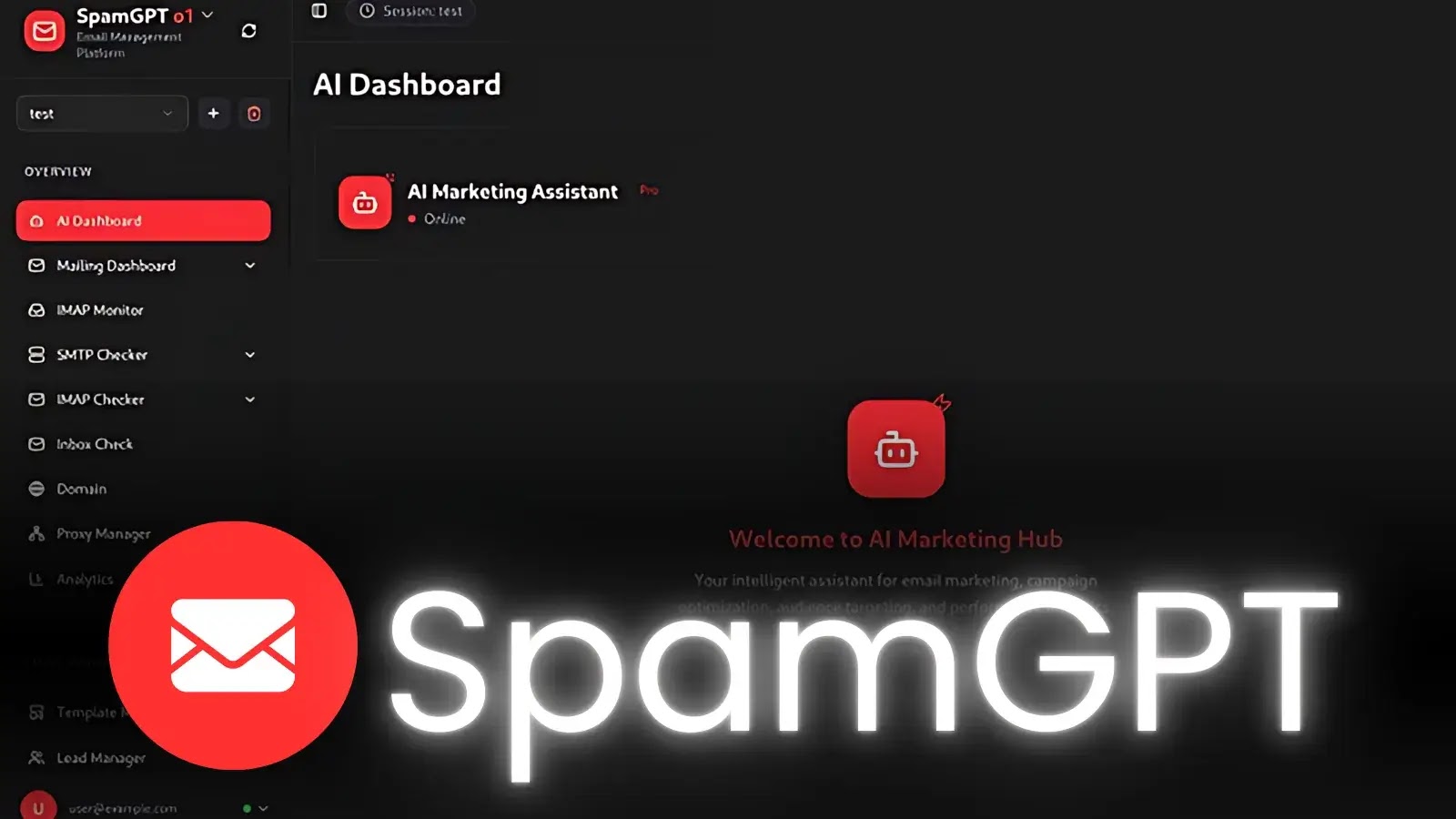New AI Email Attack Tool Fueling Massive Phishing Operations
A novel AI-driven email attack toolkit named SpamGPT has surfaced on underground hacking forums, promising cybercriminals an all-in-one platform for launching large-scale phishing campaigns.
Advertised as an “AI-powered spam-as-a-service” solution, SpamGPT automates compromise of email servers, bypasses major spam filters, and offers marketing-style campaign analytics.
Security researchers warn that its user-friendly interface and AI-assisted content generation significantly lower the barrier for mass phishing operations.
AI-Enhanced Campaign Creation and Optimization
SpamGPT’s dashboard mimics legitimate email marketing services, featuring modules for campaign setup, SMTP/IMAP configuration, deliverability tests, and real-time analytics.

Central to the toolkit is an integrated AI assistant, branded “KaliGPT,” which generates phishing email text, subject lines, and campaign strategies on demand.
This feature allows even unsophisticated attackers to produce highly persuasive, customized phishing messages without manual drafting.
The interface displays live metrics—delivery rates, open rates, and click-through statistics—enabling operators to adjust content or server configurations mid-campaign.
Moreover, the platform claims guaranteed inbox delivery for popular providers like Gmail, Outlook, Yahoo, and Microsoft 365, implying fine-tuned evasion of spam filters by abusing cloud services such as AWS or SendGrid.

SMTP Cracking, Spoofing, and Inbox Monitoring
One of SpamGPT’s standout offerings is a built-in training program on “SMTP cracking mastery,” teaching users how to locate or generate high-quality SMTP servers for bulk sending.
Adverts promise secrets to crack mail servers and produce endless SMTP accounts, granting access to compromised or misconfigured infrastructure.
The toolkit simplifies email spoofing through custom header controls and multiple sender identities.
Attackers can impersonate trusted domains by forging headers that bypass basic SPF, DKIM, and DMARC checks, especially against organizations lacking strict email authentication policies.

A bulk SMTP and IMAP checker verifies credential validity, while an IMAP monitoring module automatically logs into target mailboxes to capture bounces, auto-replies, and placement results.
SpamGPT automates inbox placement testing via an “inbox check” module that sends test emails to designated IMAP accounts and confirms whether messages land in the primary inbox or spam folder.
This immediate feedback loop allows attackers to refine email content or switch SMTP servers before executing full-scale campaigns.
The campaign management interface supports multithreading across dozens of SMTP servers and IMAP accounts, maximizing volume and minimizing throttling.
Detailed logs report the number of emails sent, delivered, and opened—mirroring the analytics of legitimate marketing platforms.
Screenshots circulated in underground communities show a dark-themed UI listing 20 SMTP servers and four IMAP accounts configured, ready to deploy spam runs.
By packaging these advanced features behind a graphical interface, SpamGPT transforms complex phishing workflows into a point-and-click operation.
At a price reportedly starting around $5,000, the toolkit makes large-scale phishing accessible to single operators rather than developer teams.
Security teams should be alert to the rise of AI-powered spam toolkits and bolster defenses with strict email authentication policies, advanced filter tuning, and proactive threat intelligence to detect and block campaigns fueled by platforms like SpamGPT.
Find this Story Interesting! Follow us on LinkedIn and X to Get More Instant Updates.














Post Comment